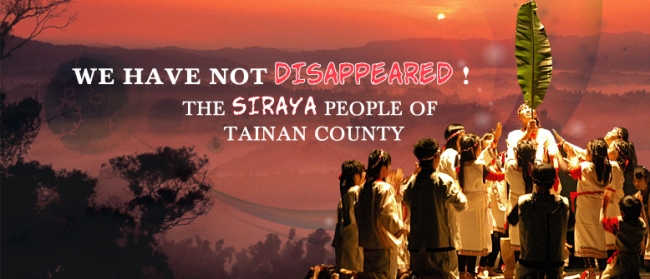
Monthly Archives: June 2014
Petition to give the Siraya people national indigenous status
Petition to give the Siraya people national indigenous status
As I’ve explained in other posts on my blog, I am currently spending my summer in Taiwan working with an indigenous group, the Siraya people. Currently the Siraya people are denied indigenous status by the national government of Taiwan despite extensive evidence of their existence and local government recognition. It would mean a lot to me and the tribe if you could take a moment out of your busy day to sign this petition!
Thanks:)
Xiaolin 小林
June 25 the Siraya Cultural Association (where I work) visited other Siraya tribes in the area. This involved an hour of driving through the gorgeous mountainside (高山) to the city of Xiaolin (literally Little Forest). Here, the Siraya community continues to practice its ancient traditions and customs such as the worship of their gods every full moon. This celebration includes feasting and traditional dances. However, the community has faced great difficulties in the wake of Typhoon Morakot.
Typhoon Morakot struck in August 2009 killing hundreds. It stands as the deadliest recorded typhoon to hit Taiwan. The disastrous typhoon caused a mudslide in the mountains that wiped out the city of Xiaolin. Only one house is left standing and over 600 residents are believed to have been buried alive. The remaining residents were relocated into three different communities by the government. We visited two of these communities to discuss the difficulties the Siraya people currently face in light of the typhoon that destroyed their homes.
The first community we visited was quite close to the actual site of the mudslide. The government has provided housing for these individuals. However, the tribe does not own the land and has to pay rent in order to plant crops and make a living. They feel that this is most unfair as these lands that the government claims have belonged to their ancestors for centuries. There are very few shops and restaurants so most young people choose to leave the community.
One of the other communities we visited had similar complaints. They live further away from their old homes but still flock to the community center for their annual night worship festivals. This community is more lively and more young people live there. We visited the main center where they make their income. They make a living selling crafts, decorations, soaps, and baked goods. The government pays them a meager salary; however, any profit they make they must give back to the government preventing the people to save or raise much money.
The people of Xiaolin have worked hard to rebuild their lives after the natural disaster. They have also built a memorial and museum to commemorate the lives lost during Typhoon Morakot.
One of Xiaolin’s mountain communities built after Typhoon Morakot.
A memorial for Typhoon Morakot. Every cheery tree represents a family who died during the mudslide.
Traditional temple Siraya people worship at.
“The rights of …
“The rights of every man are diminished when the rights of one man are threatened.”
-John F. Kennedy
The Siraya People
This summer I am spending my time working with the Siraya people of Taiwan. Records of this indigenous group first pop up in the 1600s, when the Dutch East India Company expanded to Formosa, or the current island of Taiwan. This indigenous group is one of Taiwan’s Pingpu (plain) people: named because of their settlement in the coastal plains of the southwest part of the island around present day Tainan before they were driven back into the mountains during the Japanese invasion. The name Taiwan actually comes from the Siraya language meaning “terraced bay”. 
Despite historical records indicating the tribes early presence in Taiwan, the Siraya tribe does not have national recognition from the Taiwanese government allowing the government to deny their rights as an indigenous group as listed under the UN Declaration on the Rights of Indigenous People.
The tribe has faced obstacles such as land relocation when a local university tried to force the tribe off its ancestral lands. Fortunately, the local government of Tainan has recognized the tribe and has been an advocate towards receiving national recognition. Presently, the Siraya people are working to preserve their culture and are by and large succeeding. Through the efforts of Edgar L. Macapili, the old Sirayan language has been revived and Macapili has created a Sirayan Dictionary and several books that help one learn the language. They have been teaching me a few of the words-which are easier to learn than Chinese because of the absence of tones!
My presence here is to help the Siraya gain international attention which they feel will aid them in their quest to attaining national recognition. For the next few months, I will be posting learning experiences and plenty of photos of my experience among the tribe and in Taiwan.
The world is a …
The world is a book, and those who do not travel read only a page
-Saint Augustine



